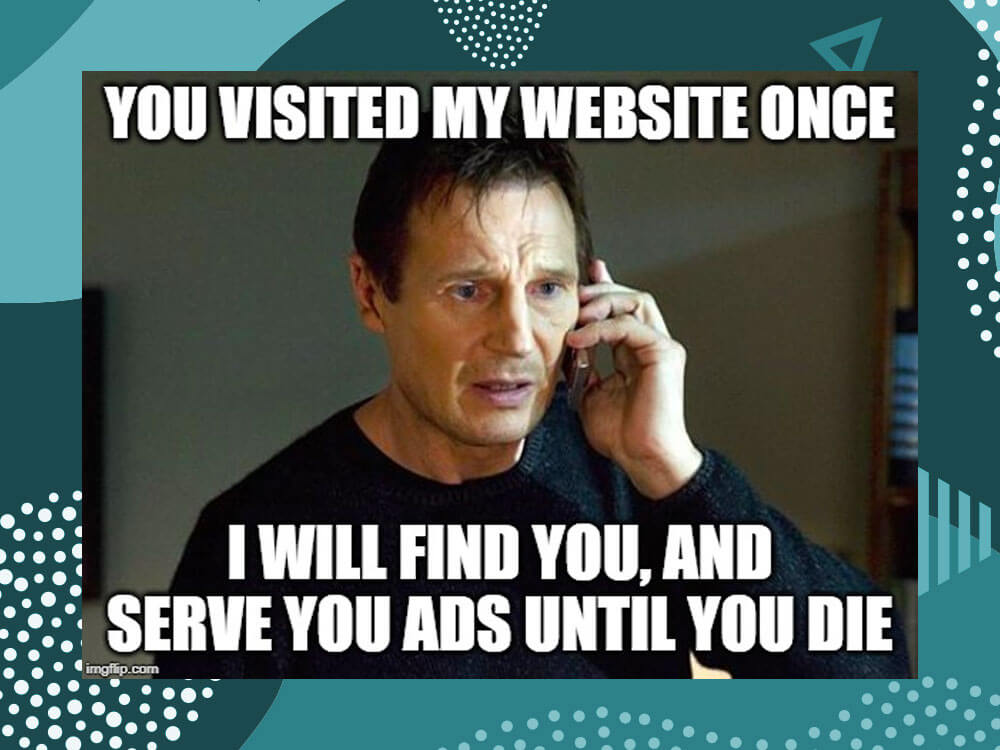Traditional vs Digital Marketing
A cohesive marketing strategy requires an understanding of the different types of promotion available to your organization. Understanding the difference between traditional marketing and digital marketing is vital to getting the most out of your marketing budget. Once you know this, you can evaluate the pros and cons of each, and create the right blend for your company.
| Traditional Marketing | Digital Marketing | |
| Medium | Billboards, TV, Radio Ads, Newspaper and Magazine | SEO, Pay-Per-Click, SEM, Webpage Building, Social Media |
| Focus | Product-Focused | Customer-Focused |
| Related To | Outbound Marketing | Inbound Marketing |
| Biggest Pros | Easier Implementation for Smaller Businesses, Informative, Not Skippable | Strong ROI, Broader and More Segmented Audience, Uses Modern Mediums, Customer-Focused |
| Biggest Cons | Expensive, Saturated Mediums, Hard to Evaluate | Requires Some Tech Skill, Ever-Changing, Less Information |
What is the difference between Traditional and Digital marketing?
To start with the extraordinarily obvious, traditional and digital marketing use different mediums to achieve their objectives. Traditional marketing relies on pre-digital forms of media to interact with prospective customers. This includes TV ads, radio, magazines, posters, etc. Broadcasting ads over real-time content interrupts the content the user is consuming. Print ads, in the same way, take the space of other material.
Digital marketing, as the name suggests, takes a more tech-focused approach. This marketing strategy uses SEO, pay-per-click, web design and content, and social media to achieve its goals.
It is vital to understand right away that traditional marketing is not exclusively “old”. Traditional marketing is not being replaced by digital marketing, nor is it better or worse. They achieve different things, target different audiences, and require different skills.
Traditional marketing is also not against using technology to improve its effectiveness. When people hear “traditional versus digital marketing”, there is a tendency to think “old versus new”. A good billboard can be intriguing and cut through the advertisement-soaked noise of media environments. Most of us can remember a time on a drive a billboard made us laugh. If not, you have likely commented on one, pointed it out to a friend, or thought about it.
With this said, there are many important differences between digital and traditional marketing. Digital tends to encourage two-way interaction with the consumer. Traditional marketing tends to be more product-focused and detail-oriented. Digital marketing has more of an eye on the consumer’s interest first, product second.
Digital marketing analytics are much more rapidly and easily generated. Consumers can easily skip or scroll past digital ads or other content. Traditional marketing tends to simply exist in their target universe, making them harder for consumers to skip over, but harder to measure.
In summary, the difference between digital and traditional marketing is the mediums and methods used. It is vital to understand that one is not inherently better than the other. They are each strategy that may or may not be suitable for your use case. Exploring the benefits and drawbacks of each will help you determine what combination of the two is right for your marketing strategy.
Benefits and Limitations of Traditional Marketing
Traditional marketing gets its name from its long-standing use in the advertisement arena. The methods are tried and tested but in no way stagnant. This marketing strategy can be extremely informative, and help consumers learn about your product in an impactful, memorable way.
This form of marketing takes advantage of its target audience’s attention to deliver more information about a product. TV ads interrupt the show you were watching, as do radio. Billboards can’t be skipped, and newspaper ads are going nowhere fast. As a result, your marketing team can pack far more information about a product or service into the ad space. For product-centric marketing, traditional methods perform well.
Another area this strategy has success is in local marketing. Using traditional marketing in a specific geographic area is great, especially for smaller businesses. Smaller businesses can repeatedly hit a regional audience, with a billboard, newspaper, or segment on a radio station. This plays into the strengths of the marketing type well.
Traditional marketing, as the name suggests, has been refined and studied for years. As a result, marketing teams have pretty set techniques on how to make these strategies effective. The four P’s Price, Place, Product, and Promotion, have been the same for decades. For you, this means the advertising campaigns will be easier to quickly draft and implement, particularly for those with less experience. Tech skills can be helpful but are far less necessary.
Smaller and local companies may not have the experience or know-how to implement SEO and Pay-Per-Click ad campaigns. Traditional marketing allows these organizations to still effectively communicate with and advertise to their audiences.
There are many limitations of traditional marketing to consider. The first one that many companies will be concerned with is cost. Traditional advertising is expensive. The ROI can be lower, particularly for less skillful campaigns with higher costs. The saturation of the mediums this method uses means there is a lot of noise to cut through.
As mentioned before, digital marketing offers rapid analytics and feedback on the success of ad campaigns or marketing content. This can be much harder to accomplish with traditional marketing. This lack of a feedback loop can make improving and targeting more difficult to do effectively. Additionally, if a campaign is not working, it can take weeks or months to know this and pull the plug. This adds to the sunken cost in ineffective strategies.
The lack of interactivity of traditional marketing can make it difficult to grab consumers’ attention. As more people spend more time online and on social media, these digital platforms require more focus in ad strategy. Traditional marketing does a worse job of building a clear brand identity and relationship with the user.
Finally, traditional marketing targeting is generally rather broad. While you can choose your ad placement, the mediums used are very static. As a result, audience segmentation and making use of factors like intent data are far more difficult. It can be difficult to talk to an audience that may share similar interests and traits but is spread out geographically, culturally, or economically. For companies that rely on a niche or spread-out, diverse client base, this can be a problematic limitation.
Those interested in traditional marketing should check out the video below.
Benefits and Limitations of Digital Marketing
Digital marketing takes advantage of newer mediums, strategies, and data to drive a more interactive advertising experience. Many of the benefits of this marketing strategy are in answer to the limitations of traditional marketing.
Rapid analytics and feedback from digital marketing campaigns allow you to quickly evaluate and adjust your strategy. While not perfect by any means, they often are better than that of traditional marketing. The interactive, customer-focused lens allows markets to very quickly build a brand identity. Customers’ control creates an environment where they drive the promotion experience. Online marketing takes advantage of the internets rapid feedback looks in ways traditional marketing can not.
This results in clear data, two-way communication with the client, and a positive user experience. In summary, if they don’t like your ad or content, they usually won’t interact with it. This removes ambiguity and very quickly tells you what is working and what isn’t.
Interactive communication allows you to listen to customer feedback and create a better product or service for them. Higher sales for you, higher satisfaction for them.
This is the first factor in creating a more cost-effective marketing method than traditional mediums. Campaigns that are not producing results can be axed or repurposed quickly. Additionally, the channels themselves are generally far cheaper. Website ads and social media content tend to be cheaper than TV and newspaper buys. Social media content on Facebook and Instagram can be costly, but comparatively cheaper, and with active engagement.
Search engine marketing strategies (SEM) relying on pay-per-click advertising allow you to only pay for the potential customers that interact with your ad. Organic search engine optimization (SEO) strategies work to literally replace competitors’ content with your own and increase traffic to your website, creating several benefits. All of these factors combine to give digital marketing a fantastic potential ROI.
Finally, digital marketing you to both reach a wider audience and expertly target different segments. You can more easily and affordably target a global or national audience. Those working in a niche industry can better segment the audience to only those who have expressed interest in specific, classifiable subjects.
Digital marketing can be intimidating to many. Many believe traditional marketing can work very well for small and local businesses. But these businesses shouldn’t be afraid of stepping into the digital marketing arena either. Social media marketing, blog content, and paid digital ads can serve as fantastic marketing channels, even to local audiences.
Cori Widen, the product marketing lead for Boosted by Lightricks said:
“As part of my ongoing market research efforts, I talk to a lot of local small business owners who are still getting used to marketing on social media. One of the biggest pain points that I hear them talking about is that they get overwhelmed by the idea of creating so many different types of visual and written content to support their marketing activities. But really, this is a misconception. It’s much easier to create content – whether in the form of articles, videos or images – than people often realize, and audiences are generally very forgiving of imperfections. If anything, they appreciate the authenticity of the DIY approach.”
Cori Widen │Product Marketing Lead│Boosted, Lightricks
For those interested in implementing digital marketing strategies, check out the video below. This contains a full, 10-hour overview of digital marketing tips and advice. You will learn about digital marketing channels and how to apply them to your organization.
Tools for Traditional and Digital Marketing Success
No matter the marketing strategy you use, there is software to help you be more achieve your marketing goals more effectively. Taking advantage of these tools will help you maximize the ROI of your marketing spend and generate more revenue.
One of the best software categories for digital marketing is marketing automation software. These platforms help you automate some of the more repetitive components of digital marketing. This can include email marketing and landing page creation. Along with these staples of digital marketing, this type of software helps with lead management. These features focus on identifying leads and helping you turn them into converting customers. Hubspot Marketing, Marketo, and ActiveCampaign are great examples of this type of software. Consider checking out this piece on free marketing automation software as well.
Customer relationship management (CRM) software also focuses on some of the fundamentals of digital marketing. With a strong emphasis on building positive, ongoing interactions, CRM software helps unify and improve the customer experience. Pipedrive, Hubspot CRM, and Salesforce are Top Rated products in this category.
Direct Mail Automation software performs a similar task for traditional marketing that email marketing software does for digital. As the name suggests, these tools are designed to automate the process of sending physical mail. This can include newsletters, brochures, and postcards. Sendoso is an example of one direct mail automation tool.
Ad serving & retargeting platforms help users manage ad programs and optimize their ad spend across channels. These allow for the placement of ads across digital channels like search results, marketplaces like Amazon and eBay, social media platforms, etc. . Many of these use prior behavior to give clues about customer behavior. LinkedIn Marketing Solutions is an example of this.
Marketing Strategies for your Business
A better understanding of different types of marketing strategies will help you improve your results and ROI. For those looking to learn more, check out this post comparing inbound and outbound marketing. No matter the marketing plan you chose, remember that a balanced approach is right for many organizations.
Was this helpful?


